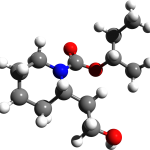KNOW ABOUT MEDICINAL PLANTS
- Home / DRAVYAGUNA (AYURVEDIC PHARMACOLOGY) /
- KNOW ABOUT MEDICINAL PLANTS
INTRODUCTION











Plants are the indispensable elements on earth that have provided enough benefits in the form of food, security, luxury and even energy to mankind. They have been very friendly to mankind and always been catering to the various needs of ours. Among the different uses, utilization in the form of medicine has been the most prominent one and stands as a second important one after food. Thus its importance of medicine has to be known to all and understood so that it can be preserved for our future generations. As per the reference from the text Astanga Hridaya Sutrasthana 9th Chapter 10th Quotation. There is no substance on earth which cannot be used as medicine. But a proper knowledge and understanding has to be endowed for using the substance such that it provides utmost benefits. Hence it is obvious that for an optimum use of medicinal plants and to reap its utmost benefits, the proper knowledge is very important.
सौषिर्यलाघवकरं जगत्येवमनौषघम् । न किञ्चिद्विद्यते द्रव्यं वशान्नार्थयोगयो: ।।
For proper knowledge and understanding of the plants, it is quite obvious that we need to know to identify them properly. All plants have certain specific features that help us to get an idea as which plant it is. Even though the perfect identification is to be done with the help of an expert in Botany, but we can get a rough knowledge which will be helpful in knowing majority of plants. To have this knowledge also some points of basic botany is quite important.
Identification of plants is done one the basis of macroscopic and microscopic characters present in it. The macroscopic characters involve the evaluation of the characteristic features with respect to the plant morphology which is technically mentioned as Habit of the plant. The microscopic evaluation is done by taking a section of the plant and studying under the microscope by magnifying it.
The benefits of this knowledge is it helps in the quality control of formulations by preventing physical adulteration, their detection if present and proper standardisation.


